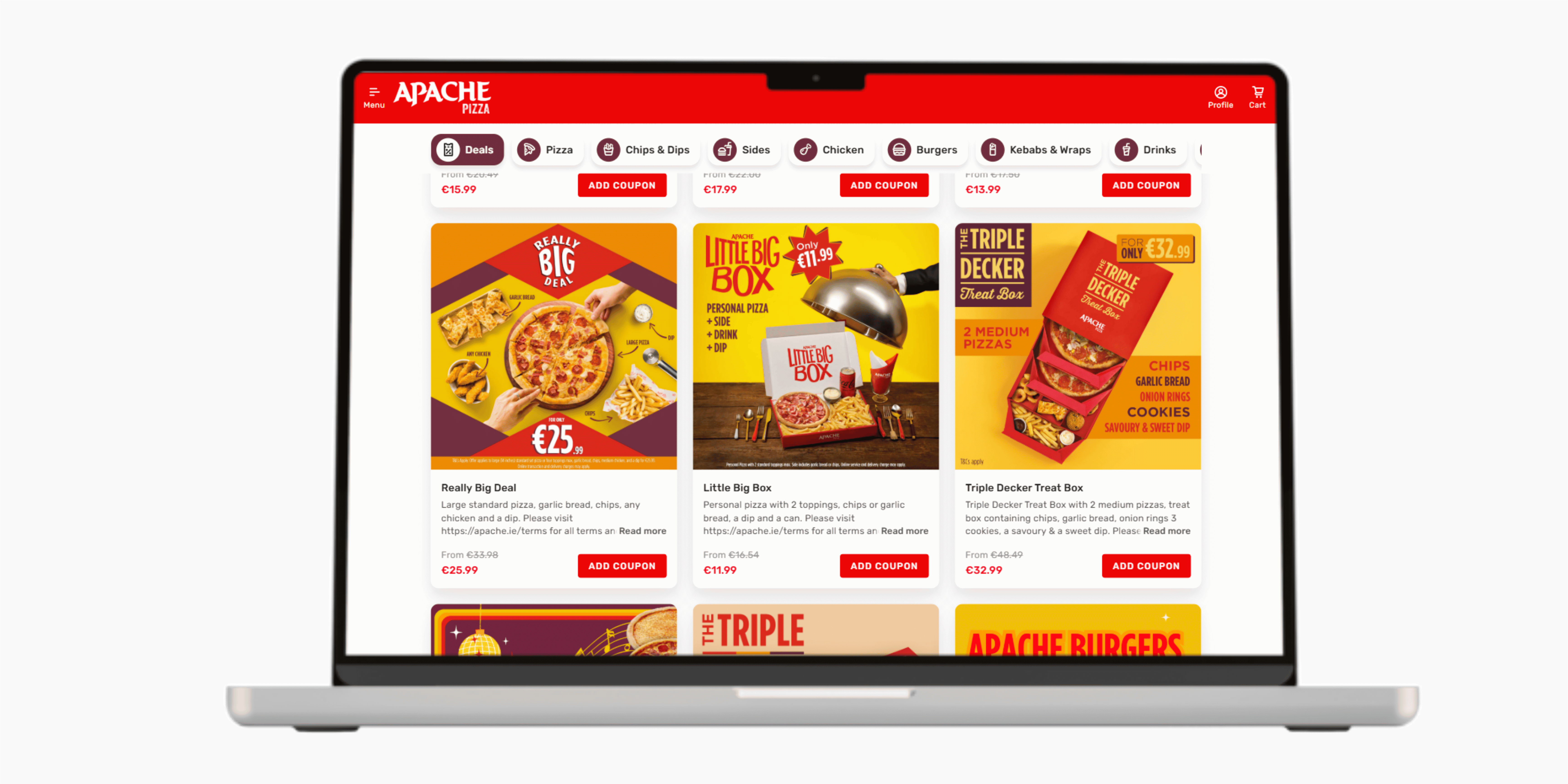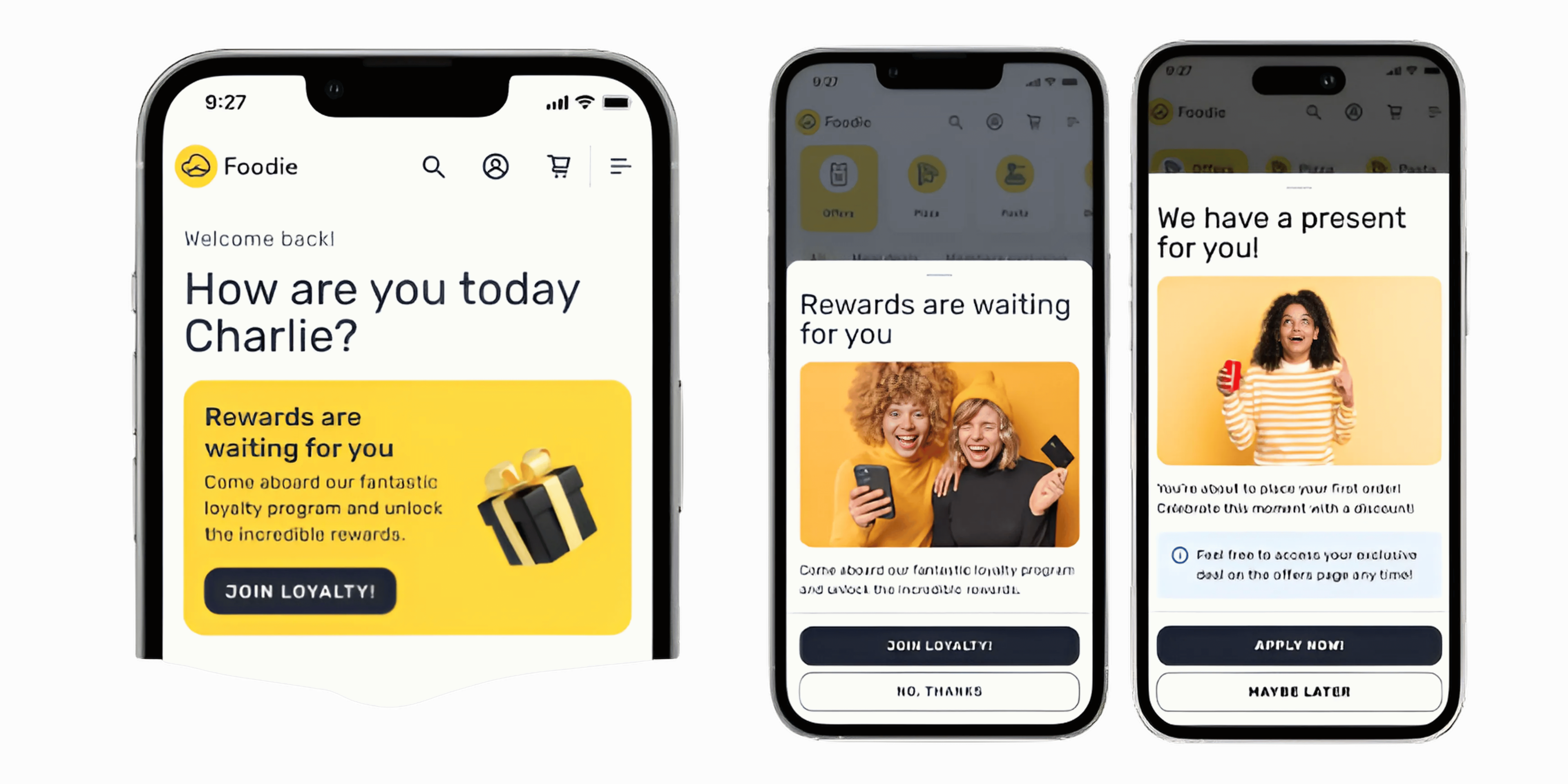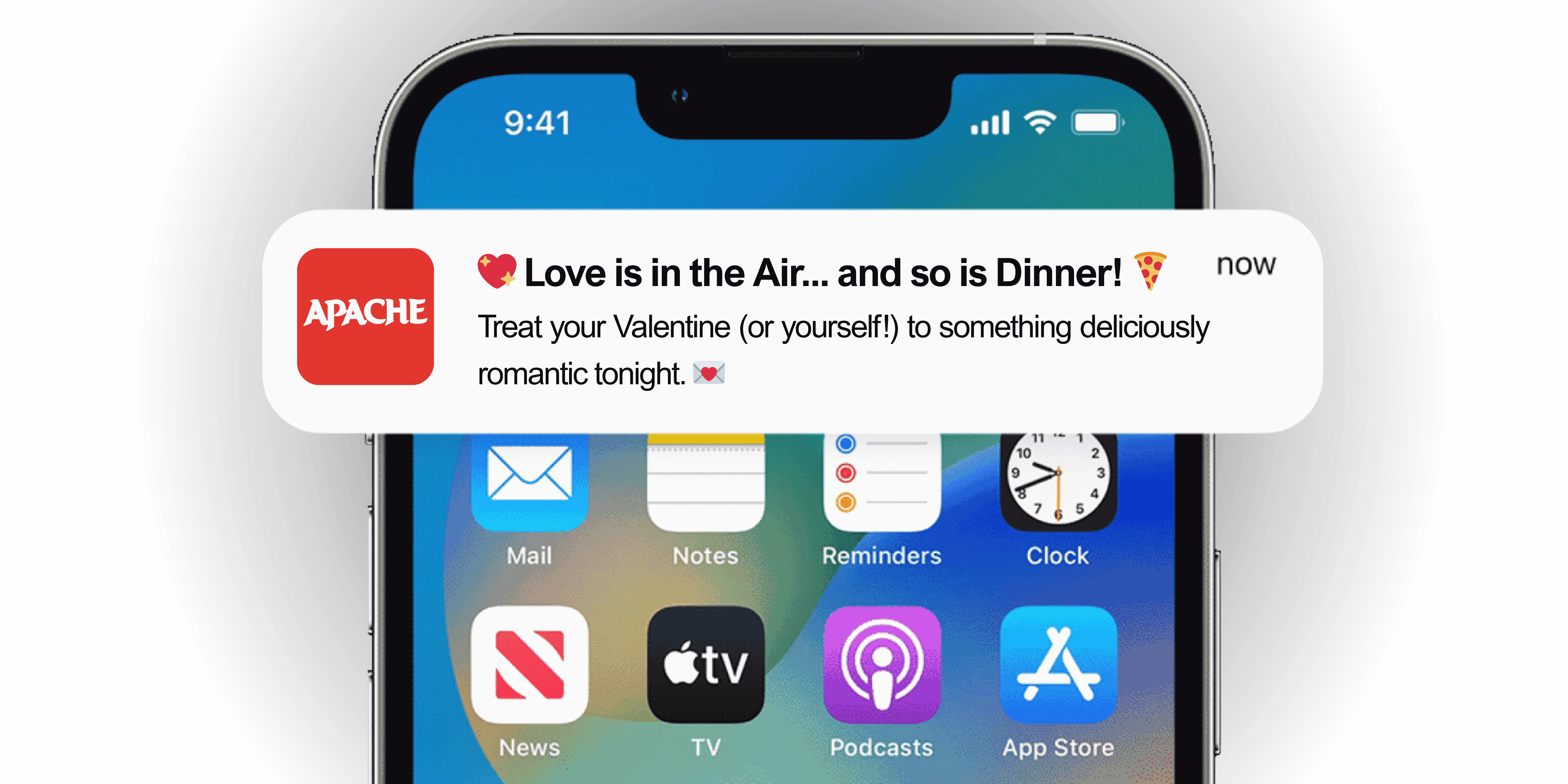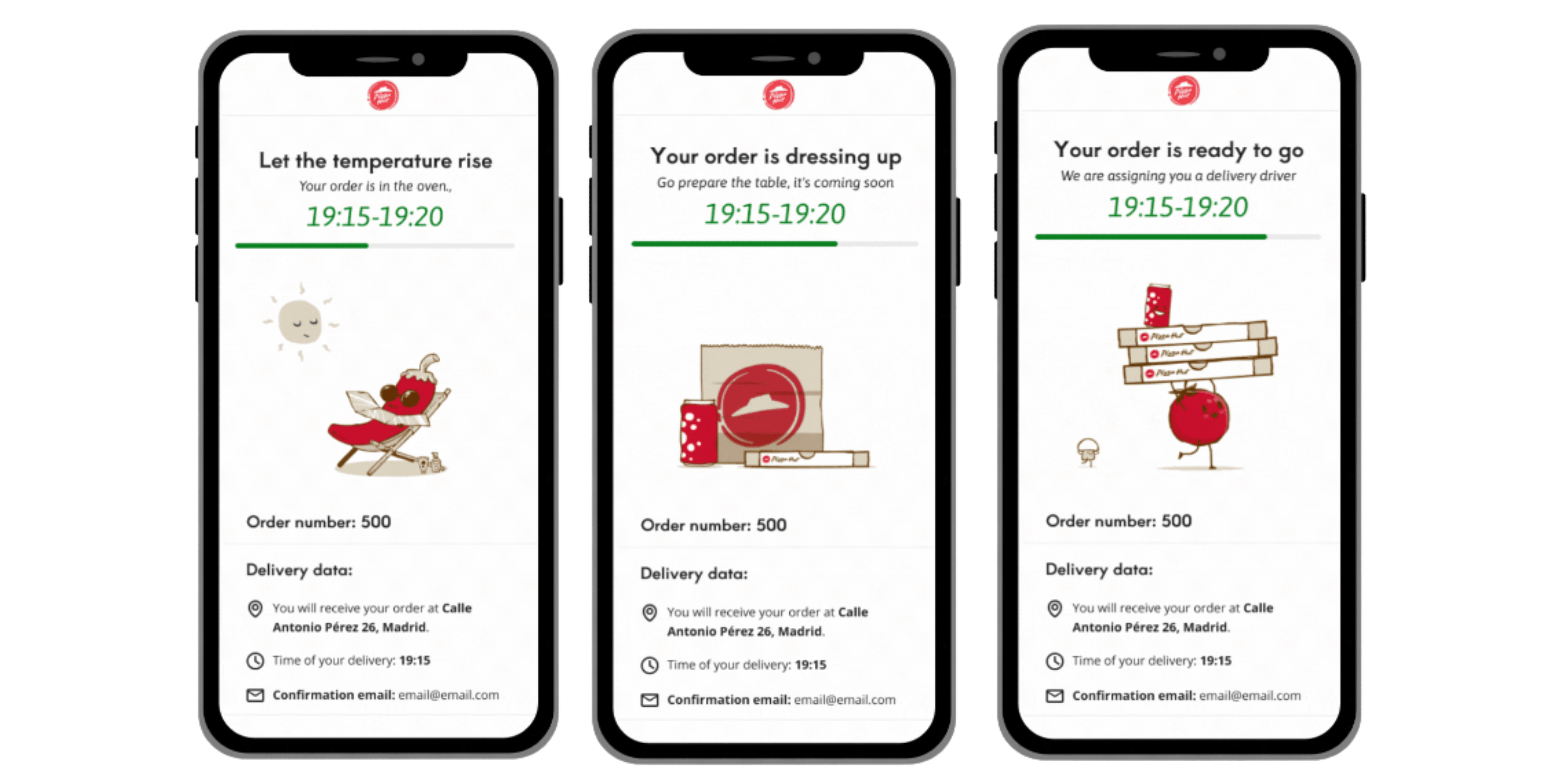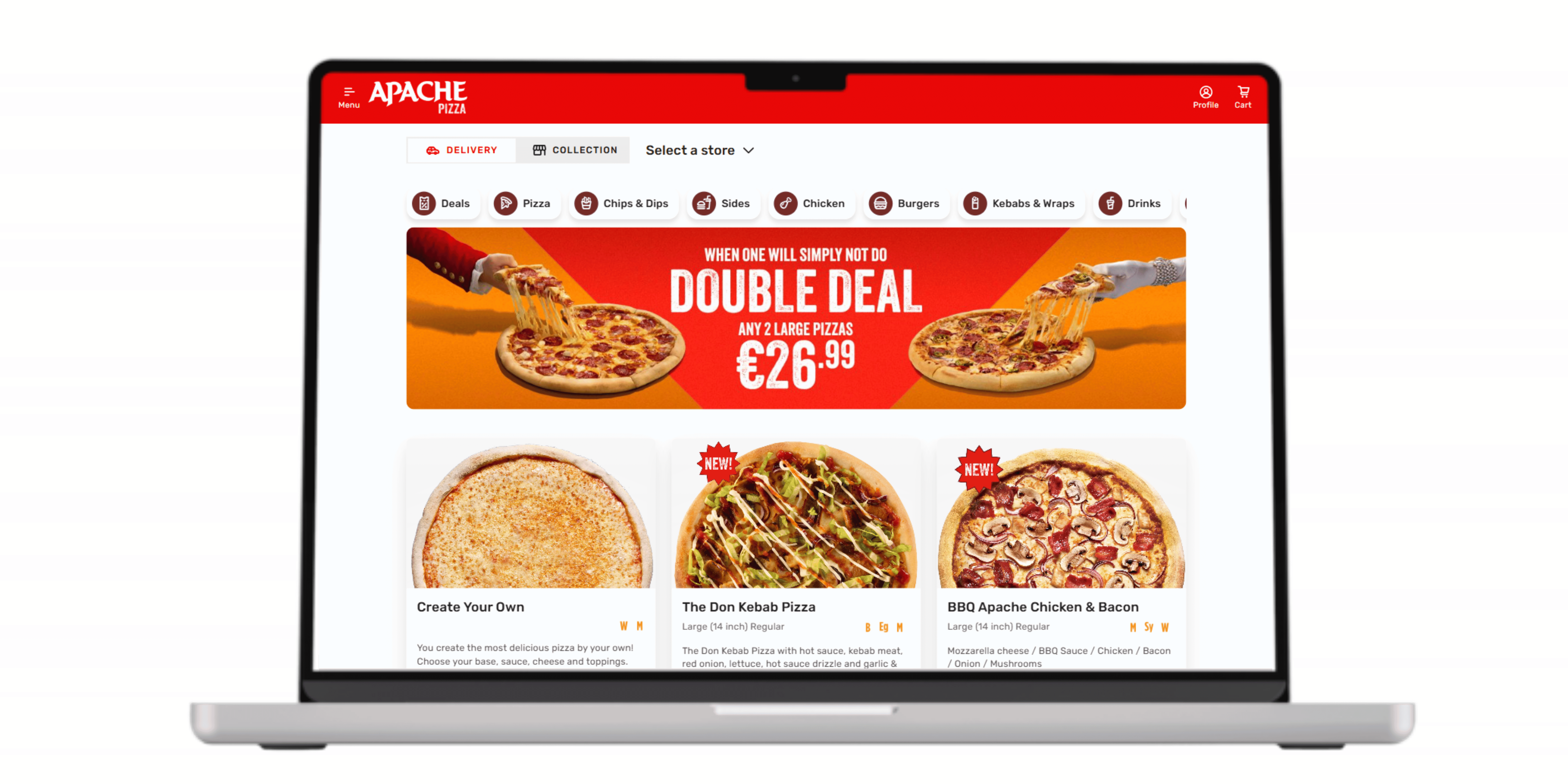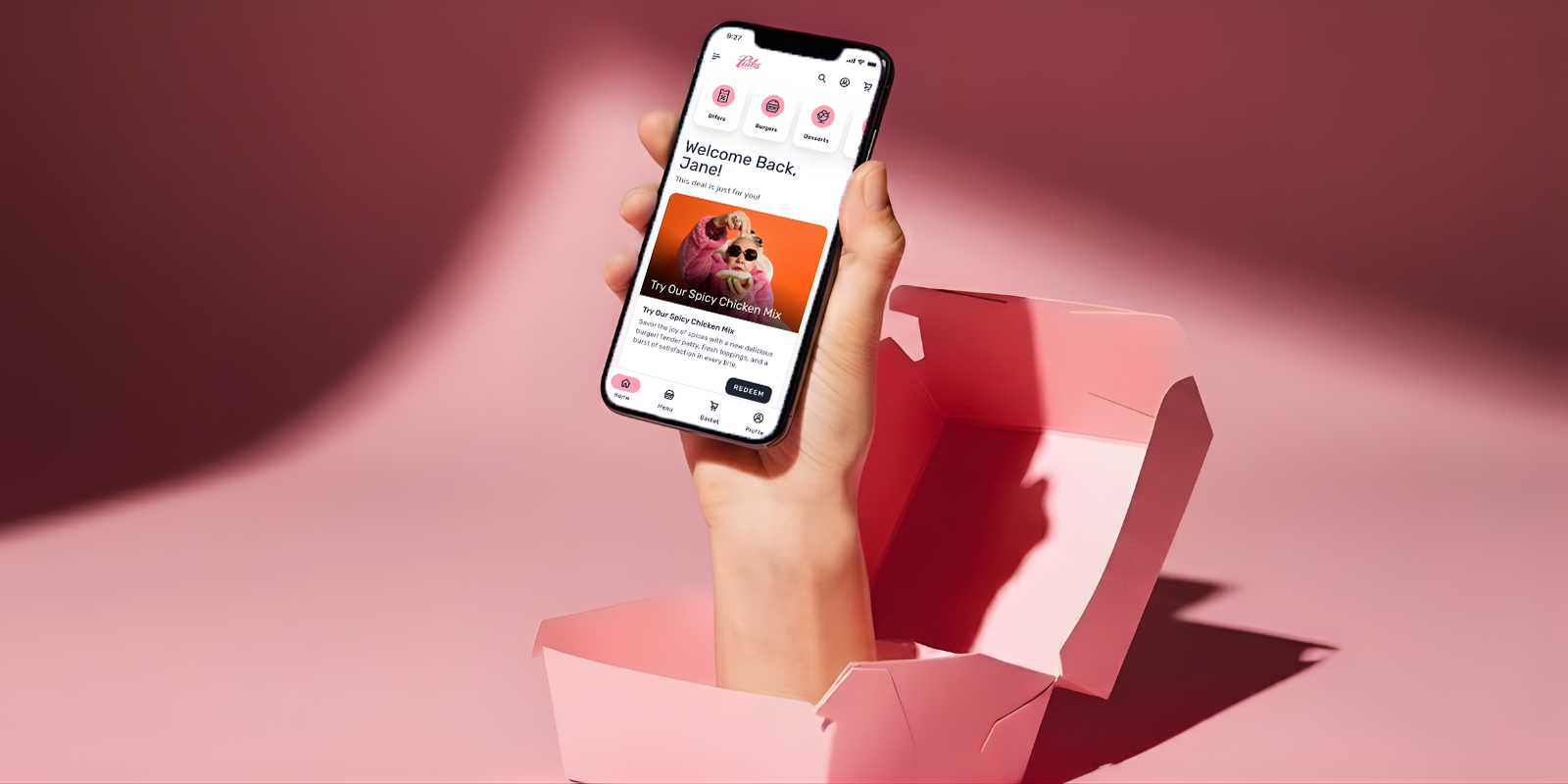
Top 5 Features of an Online Ordering System for QSRs
As online food ordering continues to rise in popularity, mobile apps and websites where customers can conveniently place orders are becoming essential for quick service restaurants to stay competitive. Having your own branded website or app not only offers convenience but also allows customers to order directly from your restaurant, helping you avoid third-party commission fees (from aggregators like Deliveroo and Just Eat) and get more profitable orders. Additionally, it gives you full control over your brand, enables a more personalized customer experience, and encourages direct engagement with your audience.
Here are five key features that can help your quick service restaurant adapt to the digital ordering trend and elevate your marketing strategy:

1. Special Promotions for Online Food Orders
Offering discounts and limited-time deals is a powerful way to increase online food orders. Exclusive promotions through your website or app, such as special meal bundles or coupon codes, can attract more digital orders while also lightening the load of staff taking orders. Whether it’s a discount on popular menu items or value deals for group meals, these targeted food promotions show that you understand your customers’ preferences, which helps build brand loyalty.
Ensure that your online ordering system includes a flexible coupon module that allows you to tailor promotions based on time, order history, or customer loyalty for a more personalized experience.
And a pro tip is to include a deal or promotions section on your own website to easier convince and cater to the customers who are looking for a deal.
Take Control with Your Own App
As a brand, you want your customers to place orders through your app—it creates a more “sticky” experience and allows you to send notifications that keep your restaurant top of mind. Data shows that app orders not only have a higher average order value but also a higher order frequency, indicating that these customers are your true fans. To encourage this behavior, incentivize app orders over website orders by offering app-only deals and exclusive coupons.
When launching your app, consider offering a “crazy discount” or similar compelling incentive to drive installs. Apps also strengthen customer interaction by providing valuable insights into user preferences and in-app behavior. This data becomes a goldmine for targeted marketing and personalized promotions, boosting engagement, sales, and overall customer experience.
Repeat promotions are crucial for maintaining engagement with quick service restaurant apps, especially since usage often drops sharply shortly after the initial download. Successful QSR publishers tackle this by consistently giving users a reason to return to the app.
Another smart move is to connect your e-commerce experience with an integrated loyalty program. This lets customers earn points or unlock extra discounts when they order directly through your app, which gives them even more reason to skip the aggregator and stick with you. It turns every order into a reward opportunity.
Aim to deliver the same experience online as in-store. Customers who use your app in-store to collect loyalty points should be just as motivated to use it when they’re hungry at home. A seamless, unified experience across channels reinforces habits, deepens brand loyalty, and keeps your restaurant top of mind no matter where hunger strikes.
Optimize with A/B Testing
Another advantage of having your own app or website is the ability to run A/B tests, also known as split testing. This is where you compare two versions of a page, design, or element (like a button, banner, or coupon offer) to see which performs better. It helps you make smarter decisions based on data instead of guesswork. Without testing, you might make changes that seem like a good idea but don’t actually improve performance, or worse – hurt it. A/B testing reduces that risk by letting you try out ideas on a small scale before rolling them out more broadly (Syndigo, 2023).
This process can reveal what truly works to boost conversion rates, improve user experience, and ultimately drive more sales through your online food ordering system.
2. Configurable Push Notifications
With your own website and app, you gain the ability to send push notifications directly to your customers, sharing time-sensitive offers, exclusive discounts, or updates in real time (Foodhub, 2024). These notifications help drive sales and encourage engagement, whether by reminding customers about food promotions or alerting them to special deals during high-demand periods like lunch or dinner hours.
For example:
- “Order now with 20% discount to receive your food before the kick-off from the World Cup Final ⚽”
- “💖 Love is in the Air… and so is Dinner! 🍕 Treat your Valentine (or yourself!) to something deliciously romantic tonight. 💌”
3. Real-Time Order Tracking and Personalized Notifications
Customers today expect full visibility into their food orders—from the moment they place them to the moment they arrive. Integrated food delivery tracking, with real-time updates like “order received,” “being prepared,” and “on the way,” builds trust and reduces uncertainty. GPS-enabled tracking goes even further, allowing customers to follow their delivery on a map, which cuts down on customer service questions and enhances the overall experience.
When your restaurant handles deliveries in-house, you gain even more control over this process. With your own drivers and a Kitchen Display System (KDS), you manage the full delivery flow – from kitchen to doorstep. This allows for more precise, real-time updates than third-party platforms typically offer, which often limit tracking information.
Pairing this transparency with personalised push notifications – especially when integrated with loyalty programs – can boost conversion rates by up to 25%. These notifications not only bring customers back but also keep them informed with timely updates like “order placed,” “prepping now,” or “out for delivery”. And because you’re not relying on an aggregator, your restaurant decides what data to share. That means greater control over your customer relationships and insights, making your online food ordering system a powerful tool for engagement and growth.
4. Interactive and Moving Banners
Dynamic banners on your website and app can highlight special items or food promotions in a visually engaging way. Whether you’re promoting a limited-time deal or introducing a new menu item, interactive banners capture attention and make it easy for users to take immediate action, such as adding the promotion directly to their cart.
5. Real-Time Out-of-Stock Settings
A boost in online food orders is great for business… but it requires effortless inventory management. A smart online food ordering system should allow your staff to update stock levels in real time. When items are unavailable, they can be temporarily disabled from the menu, helping manage expectations and reducing customer frustration. For example, if you run out of a popular side dish or dessert, customers should see that instantly on your app or website, preventing order cancellations and maintaining a good experience for both customers and kitchen staff.
Bonus: Encouraging App Ratings and Reviews
App ratings and online reviews play a key role in attracting and keeping customers. The more positive feedback you collect, the more visible and trustworthy your app becomes, just like how good SEO helps your website get found more easily. A higher app store rating makes it easier for new users to discover your restaurant when searching through food delivery apps.
Encourage customers to leave a review by prompting them through post-order emails or simple pop-ups at checkout.
It’s also important to actively manage your app store ratings. Respond to customer reviews, especially the negative ones with empathy and a willingness to help. A thoughtful reply to criticism can turn a negative into a positive impression and help humanize your brand.
Conclusion
Your restaurant’s website and app are more than just tools for order placement… They’re valuable resources that drive sales, improve communication, and shape your customer experience. By using features like tailored food promotions, push notifications, interactive banners, real-time inventory management, and food delivery tracking, you can strengthen customer relationships and future-proof your business.
